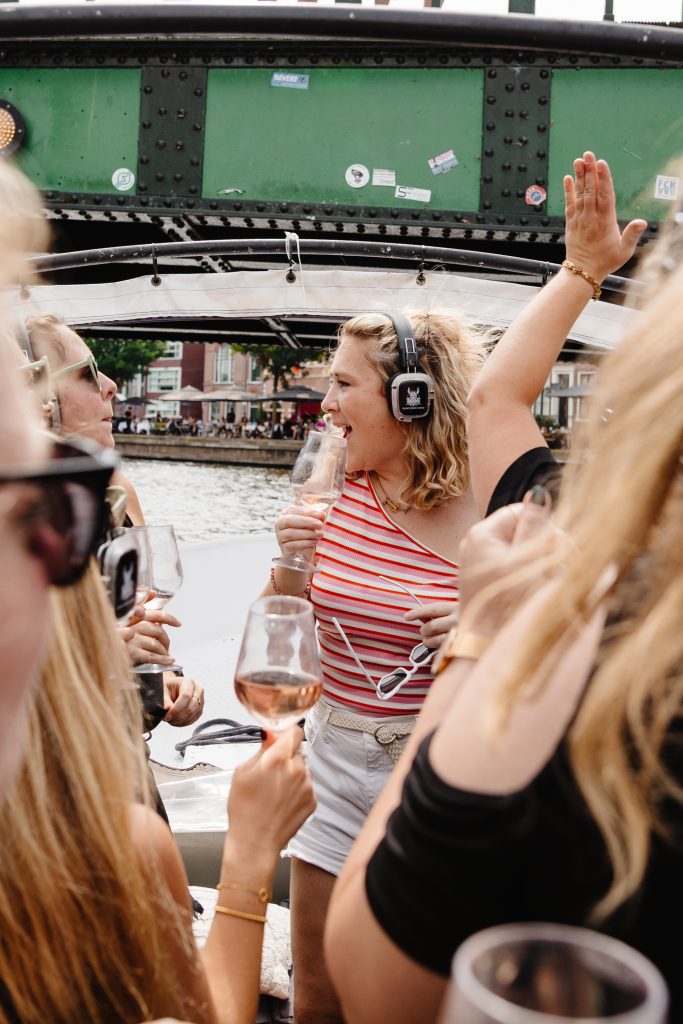You get in the car, the sun creeps over the horizon, and the first song starts just as the highway opens up. Coincidence? Not really. Music is the script, travel is the movie. Together they create a scene you can recall flawlessly later. In this article, you'll discover how music regulates your mood, sharpens your focus, and anchors your memories—from clever Spotify playlists to steamy live performances at your destination.
Ever wondered why a single chorus suddenly gives you the energy to keep driving, or why a soft piano melody makes turbulence more bearable? We delve into neuroscience, psychology, and practical tips, and we'll add real-life stories. Along the way, you'll find concrete formats, a handy table, and clear steps. When publishing, consider internally linking to related articles like a "guide to noise-cancelling headphones" or "best road trip speakers," so readers can easily click through without leaving your page.
h2: Why does music play such an important role in travel?
Music acts as an “auditory compass” that calibrates your arousal and attention. During a journey, your brain is constantly processing stimuli—moving landscapes, traffic noise, announcements. Music helps regulate this sensory flow through predictable rhythms and harmonies, reducing mental load and stabilizing your mood. This effect is similar to cruise control: you stay alert while simultaneously relaxing. Research links musical reward to activation in the striatum and limbic system—areas that control emotion, motivation, and anticipation (Salimpoor et al., 2011; Koelsch, 2014).
Moreover, music masks stressors—think engine noise or cabin noise—and supports a "cognitive bubble" where your thoughts flow more freely. This is ideal for reflection, planning, and creativity, especially when you have hours ahead of you. Traveling becomes not just a journey but also a mental reset. Consider internally linking with anchor texts like "reducing stress during long flights" and "productive routine for train travel" to further help readers (Thompson, 2012; de Witte et al., 2020).
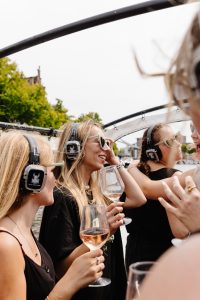
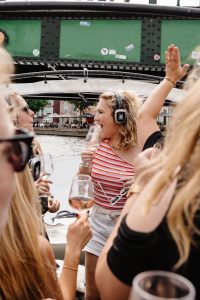
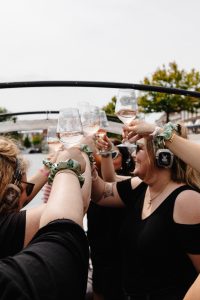
h3: How does music influence our brain and emotions along the way?
Music triggers dopaminergic circuits that encode anticipation and reward; for example, the moment before the "drop" can increase dopamine release, heightening tension and pleasure. At the same time, music influences the autonomic nervous system: slow tempos and consonant chords are associated with lower heart rates and increased heart rate variability (HRV), while fast beats are more activating. This explains why ambient music is ideal in the departure hall, while uptempo house music is more suitable for the final leg of your road trip (Salimpoor et al., 2011; Koelsch, 2014).
Entrainment also works: your internal rhythms (breathing, cadence) partially synchronize with the musical tempo. This makes tempo a powerful steering wheel for mood and behavior. Think of a walking pace that synchronizes with a 100 BPM track or soothing 60–70 BPM sounds during night flights. In this way, music becomes a subtle but effective "co-pilot" that stabilizes your emotional course (Thompson, 2012).
h3: What psychological benefits does music have for travelers?
First, stress reduction: music can reduce tension and worry, especially in unpredictable contexts like transfers or delays. Second, emotion regulation: by making purposeful choices (e.g., warm, modal harmonies or high valence), you can adjust your mood—energizing in the morning, de-energizing in the evening. Meta-analyses show that music interventions improve stress-related outcomes and reduce anxiety in a variety of settings (de Witte et al., 2020).
In addition, music enhances feelings of autonomy and control: you choose the soundtrack yourself, even if the environment leaves little choice. This works wonders for travel well-being. Try the following mini-checklist to quickly activate your psychological "music toolkit":
- Reduce stress: choose 60–80 BPM, long phrasing, little percussion.
- Increase focus: medium tempos (90–110 BPM), minimal vocals.
- Energy boost: 120–128 BPM, high “energy” score.
- De-stimulation after arrival: acoustic, low dynamics, warm timbres.
(de Witte et al., 2020)
h2: How do Spotify playlists help create the perfect travel atmosphere?
Streaming platforms offer more than just playback: they analyze audio features like tempo (BPM), valence (positive emotional charge), energy, danceability, and timbre. This allows you to create playlists tailored to your route, time of day, and task (driving, waiting, walking). Features like crossfade, gapless playback, and offline downloads make it all seamless—important where connections are unstable, such as in tunnels or while taxiing on the runway (Spotify, 2023; Internal platform documentation/whitepapers).
Curation is key. Combine algorithmic discoveries with editorial lists and your own favorites. Use "context blocks" (e.g., departure, cruising, arrival) and dynamic ordering based on sun position or traffic. Consider an internal link to your "Spotify audio features explained" guide or "best offline settings for travel" to allow readers to build on this section (Vigliensoni & Fujinaga, 2017).
h3: What types of playlists suit different travel styles?
Not every trip requires the same soundtrack. A city break in Barcelona with lots of walking calls for a more groove-filled, mid-tempo experience than a misty mountain pass where you want to stay clear-headed and calm. Use the chart below as a quick decision tree. Think of it like a card reader: you turn over the correct card based on your activity, environment, and desired emotion.
The table below will help you tailor the tempo, genres, and audio features to your destination. Add a "Table" block in WordPress for optimal mobile viewing.
| Travel Style/Context | Recommended BPM | Genres | Audio features (guideline) | Goal/Effect |
|---|---|---|---|---|
| Early departure | 70–95 | Ambient, Neo-classical, Lo-fi | Low energy, high valence, soft timbres | Quiet start, stress reduction |
| Highway cruising | 95–115 | Indie, Soft rock, Synth-pop | Medium energy, clear groove | Flow, stable alertness |
| Mountain passes/Focus | 80–100 | Post-rock, Minimal, Jazz | Low vocal density, rhythmic clarity | Concentration, situational awareness |
| City trip on foot | 100–120 | Funk, Deep house, Latin | Higher danceability, warm percussion | Speed in the legs, fun |
| Night flight/destimulation | 60–80 | Classical adagios, Drone, Piano | Low energy, broad sound, long sustain | Calm down, recover |
Pro tip: Add some local flavor. Listen to fado in Lisbon or brass band classics in New Orleans. This way, you connect auditory cues to places, which anchors your memory. This aligns with research that music can trigger strong episodic memories through hippocampal engagement (Janata, 2009).
(Janata, 2009)
h3: How can personalized music selection improve the travel experience?
Personalization means more than just following your favorites. It's about purposeful design: what emotional arc do you want to navigate? Start calmly, build energy, and land softly. Use audio features (tempo, valence, energy) and "exposure-dosing": alternate familiar tracks (safe, predictable) with discovery (novelty increases engagement). Think of your playlist as a roadmap, not a loose collection of songs (Thompson, 2012).
The steps below will help you build a high-performance “travel playlist” that will hold up in practice:
- Define purpose and context (driving, waiting, walking, sleeping).
- Select pace zones per phase (e.g. 80–95 BPM for departure, 100–115 BPM for cruising).
- Select by valence/energy for desired emotion (charging vs. discharging).
- Limit vocal density for moments of focus; increase for social moments.
- Test with crossfade (6–10 s) and adjust order to flow.
- Download offline and create a sub-playlist per part of the day.
- Inject “local flavor” (local artists) for memory anchors.
- Plan “cool-down” tracks to reduce fatigue and decision fatigue.
UX tip: Include internal mentions in your blog post that a "step-by-step playlist template" and a "smartphone EQ settings guide" are available. This increases engagement and keeps readers engaged in your content ecosystem (Vigliensoni & Fujinaga, 2017).
h2: What role do live music experiences play in our travel adventure?
Live music is the shortcut to culture: you sense the energy, rhythm, and social dynamics of a place in real time. From intimate flamenco tablao to mega-festivals, live experiences are a powerful reason to travel and influence destination image. Scholarship on event and music tourism describes how performances reinforce place attachment and a sense of community (Getz, 2010; Gibson & Connell, 2012).
Practically speaking, live events also set the rhythm for your itinerary. You plan meals, transportation, and sightseeing around them. Think of Montreux Jazz for lakeside evenings or Primavera Sound for beach towns with nightlife. Consider internal links to "attending festivals safely" and "discovering local venues" to provide readers with concrete guides (UNESCO, 2016; Getz, 2010).
Want to book a silent disco cruise?
Haarlem City Tours offer silent disco Cruises are coming! A party on the water with our own music.
A bachelor/bachelorette party, birthday, anniversary, or company outing? We'd love to help you create an unforgettable cruise that's a little different from other outings.
Enjoy Haarlem in a different way, from the water.
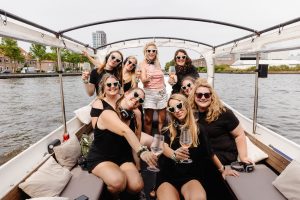
h3: Why are festivals and concerts becoming travel destinations in their own right?
Festivals combine music, gastronomy, design, and community into one intense package. This creates a unique value proposition—you're not just booking a hotel, you're booking an experience. Research on event tourism shows that such experiences resonate long-term in memory and identity; people describe "coming home" at a festival where they meet friends annually (Getz, 2010).
Icons like Tomorrowland, Glastonbury, Sónar, or Montreux serve as cultural hubs with clear brand identities (styles, values, and scenography). This makes them a primary motivator for travel choices. Publish a "festival comparison" on your site with filters for genre, month, and budget. Refer internally with anchor texts like "best European summer festivals" or "jazz cities in the Alps" (Gibson & Connell, 2012).
h3: How does local music contribute to cultural immersion while traveling?
Local music is a window into history, language, and social rituals. Fado in Lisbon, Gnawa in Morocco, tango in Buenos Aires, brass in New Orleans—each genre reveals something about migration, spirituality, or urban development. By listening locally, you connect sound to place and context, strengthening your episodic memory. This not only enhances the pleasure of travel but also cultural understanding (UNESCO, 2016; Janata, 2009).
Be respectful and make conscious choices. Use this short etiquette checklist to deepen your experience:
- Ask locally about small venues and community events (support local ecosystem).
- Please respect photo/video rules and listening codes.
- Buy music or merchandise on-site to support artists.
- Make a note of songs in your “arrival playlist” for later re-experience.
Consider internally referencing in your blog post a “guide to local genres by city” and a “glossary of musical instruments” (e.g. oud, cavaquinho, kora) for further reading (UNESCO, 2016).
Sources (APA): Salimpoor, VN, Benovoy, M., Larcher, K., Dagher, A., & Zatorre, RJ (2011). Anatomically distinct dopamine release during anticipation and experience of peak emotion to music. Nature Neuroscience.
Koelsch, S. (2014). Brain correlates of music-evoked emotions. Nature Reviews Neuroscience.
Thompson, W. F. (2012). Music, Thought, and Feeling: Understanding the Psychology of Music. Oxford University Press.
de Witte, M., Spruit, A., van Hooren, S., Moonen, X., & Stams, GJ (2020). Effects of music interventions on stress-related outcomes: A systematic review and two meta-analyses. Health Psychology Review.
Vigliensoni, G., & Fujinaga, I. (2017). Automatic Music Recommendation Systems: Beyond the Play Count. In ISMIR Proceedings.
Getz, D. (2010). The nature and scope of festival studies. International Journal of Event and Festival Management.
Gibson, C., & Connell, J. (2012). Music Festivals and Regional Development in Australia. Ashgate. (See also later music tourism literature by the same authors.)
UNESCO (2016). Culture and Sustainable Urban Development: Analytical Report. (Relevant passages on living music practices and urban identity.)
Spotify (2023). Documentation and white papers on audio features (tempo, valence, energy) and personalization algorithms.
h2: How can travelers use music to enhance memories?
Memories and music are deeply connected. Music activates the hippocampus, the brain region responsible for episodic memory. This explains why a single song can instantly transport you back to a train ride through the Alps or a car trip through Tuscany. By consciously linking music to moments during your journey, you strengthen these memory anchors. It's like adding a soundtrack to your own movie, making the experience vivid years later (Janata, 2009).
Moreover, music helps process experiences. A melancholic song on a rainy day in Kyoto can deepen your emotional experience, while an upbeat pop track can energize your travel companions. Travelers can actively utilize this by tailoring playlists to specific destinations or moods. The result is a richer memory archive that is both emotionally and sensorially charged.
h3: Why do we associate certain songs with specific travel experiences?
The explanation for this lies in the theory of encoding specificity From cognitive psychology: memories are better recalled when the context (such as sounds or smells) matches the original situation. Music functions as a powerful cue that recaptures that context. A summery reggae song heard on a Jamaican beach can still evoke the exact same feelings of warmth and freedom ten years later (Tulving & Thomson, 1973).
Emotional intensity also plays a role. When an experience is accompanied by strong emotions—such as excitement, emotion, or nostalgia—the connection between music and memory becomes even stronger. This explains why people often say, "That song takes me back to my backpacking trip in Asia." In a sense, music functions as a memory key that opens a door to rich, sensory memories.
h3: How can a travel playlist serve as a musical diary?
A travel playlist can be just as valuable as a written diary. By choosing a selection of songs for each day or destination, you document not only your activities but also your mood and atmosphere. When you listen back later, you relive the trip, including the little details you might otherwise have forgotten. This makes the playlist a personal and living travel archive.
To put this into practice, you can create a mini-playlist for each phase of your journey. For example: departure, en route, arrival, and reflection. Add local music you discover on the spot, so your memories remain authentically connected to the destination. This approach turns your playlist into a musical diary you can revisit again and again. Consider linking internally to an article on "digital travel diaries" or "combining photography and music" to inspire readers to document their journeys multimedia-based.
h2: What do experts and researchers say about the connection between music and travel?
The connection between music and travel is not only experienced but also confirmed by scientific studies and experts in psychology, music therapy, and tourism. Researchers describe music as a powerful tool for emotional regulation, stress reduction, and memory enhancement during travel. Musicians and travelers add personal insights to this: from the best genres for focus to the value of local music experiences for cultural deepening (de Witte et al., 2020; Getz, 2010).
This combination of science and experience creates a complete picture: music isn't just background noise, but an integral part of the travel experience. For bloggers and travel organizations, this offers opportunities to deepen content and strengthen their authority. For example, internally refer to related topics like "travel psychology" or "music and well-being."
h3: Which scientific insights confirm the influence of music on our travel experience?
Neuroscientific research shows that music stimulates dopamine release, making traveling with music a more positive and energetic experience (Salimpoor et al., 2011). Music also influences heart rate and cortisol levels, which reduces stress during flights or long waits. This makes music a proven stress buffer in travel contexts.
Furthermore, studies point to the role of music in memory consolidation. By linking auditory stimuli and contextual memories, music helps travelers remember events more vividly and for longer (Janata, 2009). This makes music not just a temporary boost, but a lasting enhancer of travel experiences.
h3: What are the experiences and tips of experienced travelers and musicians?
Many travelers swear by their "go-to playlist" for road trips or long flights. Some choose soothing ambient music during night flights, others upbeat pop music for car journeys. Musicians often recommend scheduling live music, such as local performances or festivals, because this creates a unique connection with the culture. For example, one jazz musician told me that he learned more about Cuban culture in Havana at a local concert than on a museum tour.
Frequently recurring tips include: bring noise-canceling headphones, download playlists offline, and experiment with local genres. It's also recommended to not only play your own favorites, but also create a collaborative playlist with your traveling companions. This creates a shared musical memory that you can reminisce about later. Consider creating an internal link to a "checklist for taking music on your trip" to help you with this.
h2: How do you choose the right music for different types of trips?
Not all journeys require the same soundtrack. The right music depends on the mode of transport, duration, environment, and purpose of the trip. While an energetic beat is ideal for a long car ride, a soothing piano piece might be more suitable for a night flight. By making a conscious choice, you make your journey more enjoyable and meaningful.
Choosing music is therefore similar to choosing the right outfit: you match it to the occasion. Technical factors like BPM, tonality, and valence play a role, as do personal preference and cultural context. For maximum impact, combine scientific insights with your own intuition.
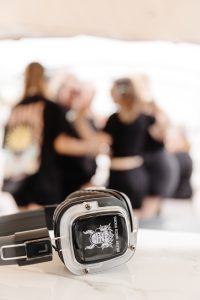
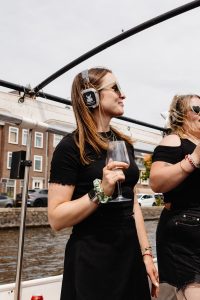

h3: What music works best for road trips, plane trips, or train rides?
For road trips, energetic songs with a BPM between 100 and 120 are ideal. Think rock, indie, or synth-pop that keep you rhythmically alert. On long plane journeys, many travelers opt for calming ambient, classical music, or lo-fi beats that reduce stress and promote sleep. For train journeys, which are often more rhythmic and calming, jazz, minimal techno, or acoustic singer-songwriter tracks perfectly match the cadence of the train (Thompson, 2012).
A practical overview:
- Road trips: Upbeat rock, indie, electronic pop (100–120 BPM, high energy, positive valence).
- Air travel: Ambient, classical, lo-fi (60–80 BPM, low energy, calming effect).
- Train rides: Jazz, acoustic, minimal techno (80–100 BPM, rhythmic focus, medium energy).
With these guidelines, you'll create a musical "travel companion" that not only shortens your time but also enriches your travel experience. For further exploration, you can refer internally to a "Guide to Music Genres for Different Moods."
Sources (APA): Janata, P. (2009). The neural architecture of music-evoked autobiographical memories. Cerebral Cortex. Tulving, E., & Thomson, D. M. (1973). Encoding specificity and retrieval processes in episodic memory. Psychological Review. Salimpoor, VN, et al. (2011). Anatomically distinct dopamine release during anticipation and experience of peak emotion to music. Nature Neuroscience. de Witte, M., et al. (2020). Effects of music interventions on stress-related outcomes: A systematic review and meta-analyses. Health Psychology Review. Thompson, W. F. (2012). Music, Thought, and Feeling. Oxford University Press.
h3: How can you find a balance between your own musical taste and that of your fellow travelers?
Traveling with others also means making compromises, especially when it comes to music. While you might prefer mellow jazz, your traveling companion prefers heavy techno. Finding balance starts with communication: discuss your preferences beforehand and create a playlist together that incorporates both styles. Think of it like cooking a meal together—everyone brings their favorite ingredient, and together you create a dish that tastes surprisingly good.
In practice, it helps to use collaborative playlists, like Spotify's. This allows everyone to add songs, making the soundtrack a reflection of everyone's taste. Also, consciously alternate: an hour of your genre, then an hour of your traveling companion's. By dividing this fairly, music becomes a unifying element instead of a source of friction. Tip: consider linking internally to an article about "collaborating with Spotify" or "musical group activities on the road."
h2: How can readers share their own experiences and favorite travel playlists?
A travel article truly comes alive when readers add their own experiences. After all, music is personal and subjective; what's relaxing for one person can be energizing for another. Sharing experiences creates an interactive community where inspiration and tips circulate freely. Think of a traveler who says they always listen to minimal techno in the Sahara, or someone who swears by classical music during night flights.
Sharing playlists also enhances the value of your blog. Readers not only receive theory but also tangible examples they can listen to right away. This stimulates engagement and encourages discussion: "Why did you choose that song for that destination?" This way, your article becomes a living platform. Consider an internal link to a "playlist creation guide" so readers can get started right away.
h3: In what ways can you leave comments and stories?
Readers can share their experiences in several ways. The most direct way is through the comments section at the bottom of the blog. Here, they can leave anecdotes, post favorite tracks, or share tips about local music experiences. Another option is a short form where readers can upload or link to their personal travel playlist. This makes it interactive and gives others instant access to new inspiration.
A list of possible forms of interaction:
- Comments at the bottom of the blog with personal stories.
- Submitted Spotify or YouTube playlist links.
- Short anecdotes via a contact form or guest blog option.
- Voting rounds or polls about favorite travel genres.
By offering multiple channels, you lower the barrier to active contribution. This stimulates the community and increases the likelihood that readers will return to read comments or discover new playlists.
h3: How does social media encourage the sharing of musical travel experiences?
Social media acts as an amplification of your musical travel stories. Platforms like Instagram and TikTok make it easy to pair a photo or video of your trip with a recognizable song. This increases the emotional impact and makes your memory shareable in an engaging format. Imagine a short video of a road trip accompanied by a classic rock song: in just a few seconds, the viewer is transported right into your journey.
Moreover, hashtags and challenges make sharing easier. For example, a traveler can use the hashtag #TravelSoundtrack to make their playlist visible to a wider audience. This not only creates inspiration but also social validation: music becomes a shared language that connects people. Consider linking internally to an article about "social media and travel experiences" to give readers additional tools.
h2: What are the key insights and how can you consciously use music during your next trip?
The key insight is that music is more than just background noise; it's an active tool that can shape your travel experience. By consciously choosing music, you can regulate your mood, reduce stress, enhance memories, and even increase cultural connection. Whether you're listening to a personalized Spotify playlist or attending a local concert, music is the common thread that binds individual moments together into a meaningful whole.
For your next trip, you can put these insights into practice by following three steps: (1) create playlists ahead of time that align with different phases of your trip, (2) schedule moments to discover local music, and (3) document your travel experience with a music journal. Along the way, ask yourself, "What soundtrack do I want to connect with this moment?" The answer can make your trip not only more enjoyable but also unforgettable.
In short: music is your traveling companion, your memory anchor, and your cultural compass. Use it consciously, and your journeys will take on a deeper, richer meaning.
